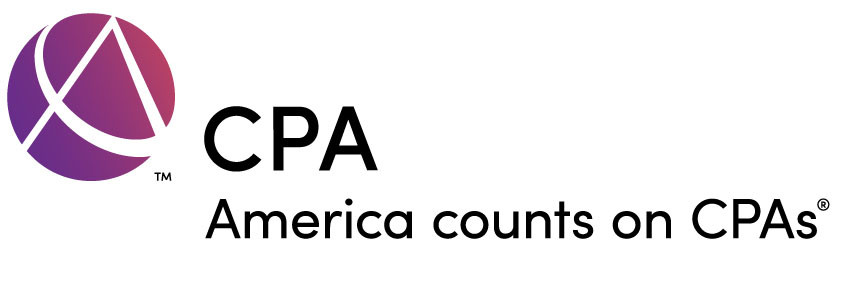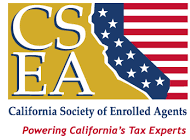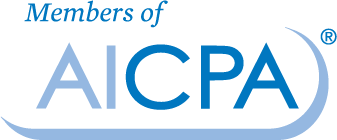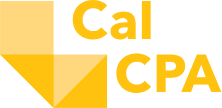Ready to Get Your Money Back From the IRS?
Bring us up to 3 years of past taxes and we’ll find ways to save you money, when we do we’ll help you file to get your money back from the IRS.

Convert your passenger vehicle to business use. The new tax law (TCJA) has made it more beneficial to convert a used vehicle to business use, allowing bonus depreciation on new or used vehicles. (Prior law required the vehicle to be new). TCJA allows you to deduct up to $18,000 in the first year on your vehicle (new or used if over 50% business use) by taking $10,000 maximum Sec. 179 deduction and $8,000 maximum bonus depreciation, provided that your vehicle cost or is valued over $18,000 when placed in the business.
Convert sole proprietorship to S Corporation. By operating your business through an S corporation, you may be able to save a lot of money in self-employment taxes. S corps have the unique ability to save themselves and their working owners money on payroll taxes by dividing compensation into two parts: reasonable wages and distribution of profits.
For example: If your sole proprietor business had profit of $100,000, all $100,000 is subject to both income taxes and self-employment taxes. If instead, you converted to an S corporation and paid yourself a reasonable salary of $50,000 and took the other $50,000 as a profit distribution, you would save about $7,500 on the distribution portion (saving 15.3% on self-employment/payroll taxes).
Have your corporation reimburse you through an Accountable Plan. Since the TCJA has eliminated employee business expenses, it’s more important than ever for your corporation to reimburse you for the business-use of your personal vehicle through an Accountable Reimbursement Plan. That way your corporation gets a tax deduction and you’re reimbursed tax-free for both income taxes and payroll taxes and the reimbursement isn’t subject to Alternate Minimum Tax.
Note: Accountable Reimbursement Plans should be formally drafted and approved by the corporation’s Directors and recorded in the minutes.
Claim a home office to increase vehicle deductions. When your home office is used as your business’ administrative office, you not only get the home office deduction but also greater vehicle deductions, because an “administrative” home office converts non-deductible commuting into deductible business miles, making all the trips from home to each business stop deductible. It also simplifies recordkeeping for business-use by eliminating the requirement to track the first and last trip between the home and the regular place of business each day.
Note: An Accountable Reimbursement Plan can be used to reimburse home office expenses for working owners of corporations for a greater tax benefit.
Self-employed health insurance deduction. If you have business earnings, you may be able to deduct your health insurance premiums on your 1040 return as a self-employed health insurance deduction (SEHID).
What’s allowed for SEHID? Health insurance premiums that aren’t provided by another employer, that you pay while being self-employed, including Medicare, dental and long-term care premiums for you, your spouse and dependent children 26 or younger included on your insurance.
Set up a Medical Expense Reimbursement Plan (MERP-Sec. 105). In addition to the self-employed health insurance deduction, MERPs can allow qualifying business owners a deduction for medical expenses too. MERPs are fringe benefits for employees, fully exempt from income taxes, FICA and Medicare taxes for rank-and-file employees and working owners of C corps.
However, the tax benefits vary for other situations, as follows:
Businesses not taxed as corps. Owners of non-corporation businesses must be married and hire their spouse to receive the maximum tax benefits, being covered through their spouse’s wages.
Businesses taxed as corporations. Working owners of entities taxed as corporations (C or S corps) can be married or single and qualify for Sec. 105 plans (limitations for S corps).
C Corps can maximize medical benefits to working owners on a totally tax-free basis, for both health insurance premiums AND medical expense reimbursements.
S Corps. 2% working owners of S corps get a lesser benefit (exempt for FICA, Medicare only—15.3% tax savings).
Establish a Health Savings Account (HSA). HSAs are a great way for individuals and S corporation owners to deduct medical expenses in addition to the insurance premiums. HSAs are best for people who don't use health insurance much and don't mind paying co-pays or deductibles the few times they use it. They save money on premiums, buying a high-deductible plan and use their savings to fund an HSA.
Contributions to HSAs are tax-deductible, like IRAs. HSA funds are used to pay health expenses currently or in the future. Contributions are limited to $3,450 for a single plan or $6,900 for a family plan (2018). If over age 55 an extra $1,000 can be contributed annually to either plan.
Fund your IRAs or business retirement plan. If you want to contribute more to your retirement than the IRA limit of $5,500 ($6,500, if over age 50), then you should consider establishing a tax-deductible retirement plan, such as a SEP, SIMPLE or 401k plan.
SIMPLE plans. SIMPLE plans can be funded by employer contributions and/or elective employee salary deferrals, up to 100% of compensation for a maximum of $12,500 for 2018 ($15,500 if age 50 or older). The plan must be established no later than October 1, in the first year.
SEP IRA: Simplified Employee Pension Plan. SEPs are funded by the entity or employer. Contributions can be made each year between 0% and 25% of compensation (maximum $55,000 for 2018). Each eligible employee must receive the same percentage
401k plans. Traditional 401k plans are for employees and working owners of corporations and LLC corps.
Solo 401k plans. Solo 401ks are for sole owners with no full-time employees other than you and/or your spouse. Solo plans are great for sole employee-owners of corporations and LLC corps.
Employee contributions. For 2018, employees (and working owners) may contribute up to $18,500 from wages or self-employed compensation to a regular or solo 401k plan ($24,500 if age 50 or over) or even more depending on the plan chosen.
401k profit sharing plans (PS)—employer contributions. For 2018, PS plans allow employer contributions up to $36,500 and when combined with employee contributions, a maximum total of $55,000 or $60,000 (if aged 50 or more).
An employee can be your spouse or working-age child.
Buy equipment before year-end. If you expect to purchase equipment early next year, you may want to buy it before year end, even if you must use a credit card. The TCJA allows you to deduct 100% of the cost as bonus depreciation and/or Section 179 deduction.
Hire your kids to help in the business. Don’t give your kids money. HIRE THEM INSTEAD. Hiring your dependent children may allow you to indirectly write off your kids’ future college or trade school expenses by deducting their wages and using the wages to contribute to a college fund, traditional IRA or Roth IRA, where the funds could be used later to pay for school.
TCJA makes hiring your kids better. Now kids pay no taxes on earned income up to $12,000, due to the increased standard deduction allowed when filing tax returns.
For example: You pay your dependent child $20,000 and deduct the wages through your business. If this is your child’s only income, your child would file tax returns, owing only about $800 on the $20,000. ($20,000 - $12,000) x 10% = $800. However, your business would deduct the $20,000 paid in wages, saving your business about $6,000 in taxes. And:
You still get to claim your child as a dependent and
Your child’s earnings aren’t subject to kiddie tax.
Hire your spouse. Hiring your spouse may be a great way to maximize pre-tax retirement contributions (401k, SIMPLE IRA, Profit Sharing) and fringe benefits (health insurance, medical expenses, dependent care, life insurance premiums, education expenses and more).
For example: Your spouse could contribute up to $18,000 (or $24,000 if over 55) to a 401k and your company gets a tax deduction, while your spouse doesn’t claim any income until years later when needed for retirement. Reducing current taxes by deferring taxable income).
Increased benefit for spousal travel as employee. Generally, travel expenses for a spouse of an employee or owner on a business trip isn’t deductible, but spouses who are bona fide employees traveling for valid business purposes (airfare, lodging, 50% of meal costs and such) are deductible and the benefit is tax-free to the employees (even spousal employees).
Bring us up to 3 years of past taxes and we’ll find ways to save you money, when we do we’ll help you file to get your money back from the IRS.
 |  |  |  |  |
See how we can help you today!